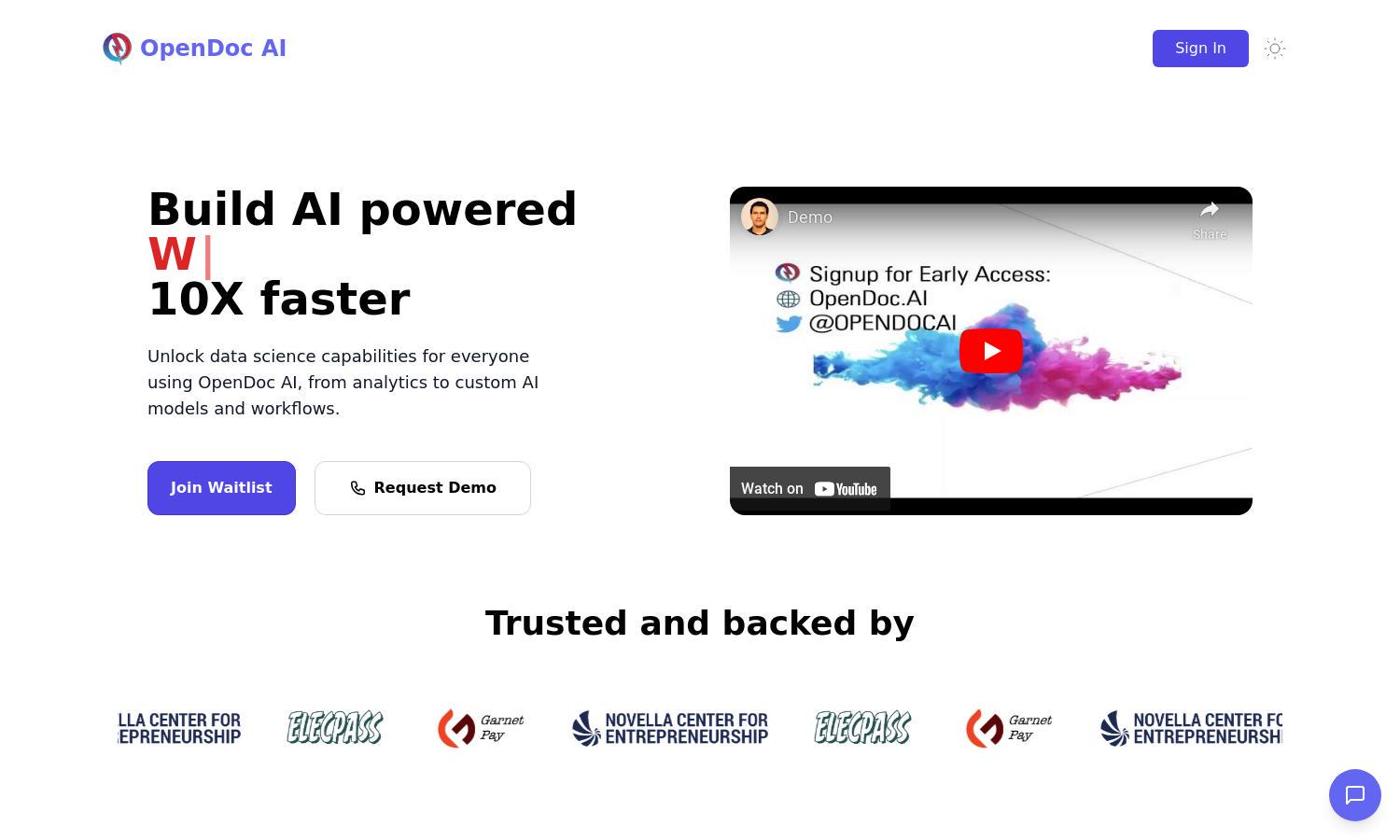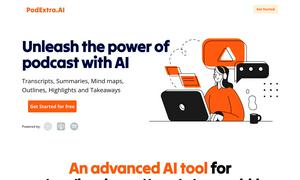OpenDoc AI

About OpenDoc AI
OpenDoc AI is revolutionizing data accessibility by using generative AI to empower users of all technical backgrounds. By transforming complex data queries into simple natural language tasks, users can swiftly gain actionable insights and automate workflows, solving the data engagement challenge across organizations.
OpenDoc AI offers flexible subscription tiers to accommodate various user needs, enabling access to powerful AI tools. Each plan provides unique value, with options for collaboration and premium features, making it an attractive upgrade for teams seeking improved data insights and efficient workflows.
OpenDoc AI boasts a user-friendly design that streamlines the data interaction process. Its intuitive layout showcases essential features prominently, reducing the learning curve for users. Seamless navigation and accessibility ensure that every user can maximize their productivity while engaging with data effectively.
How OpenDoc AI works
Users begin by signing up for OpenDoc AI, experiencing an easy onboarding process. Once registered, they can navigate to the main dashboard to describe their data-related tasks in plain English. The platform then utilizes generative AI to generate and execute actions, making data insights accessible to everyone.
Key Features for OpenDoc AI
Automated Workflows
OpenDoc AI's automated workflows allow users to create task prompts that streamline repetitive processes, saving time and effort. By simply describing tasks, users can let AI take over, making it an invaluable tool for enhancing productivity in any organization.
Chat for Data Insights
The chat feature of OpenDoc AI enables users to transform data into insights simply by asking questions in natural language. This user-friendly functionality democratizes data access, allowing even non-technical users to engage thoughtfully with their datasets.
Integration with Multiple Data Sources
OpenDoc AI supports integration with various databases, including PostgreSQL and MySQL, ensuring users can work with diverse data types. This flexibility enhances users' ability to derive insights from different data sources seamlessly, further enriching their analytical capabilities.
You may also like:








